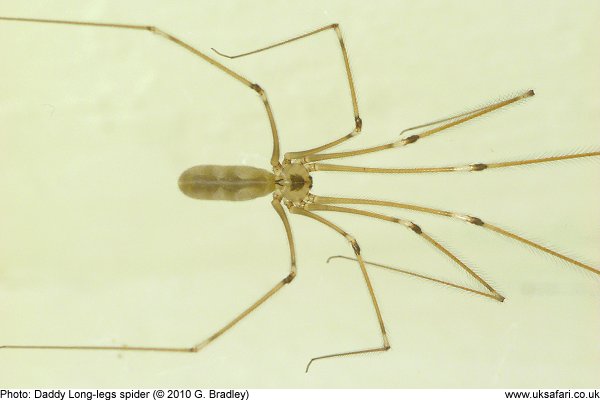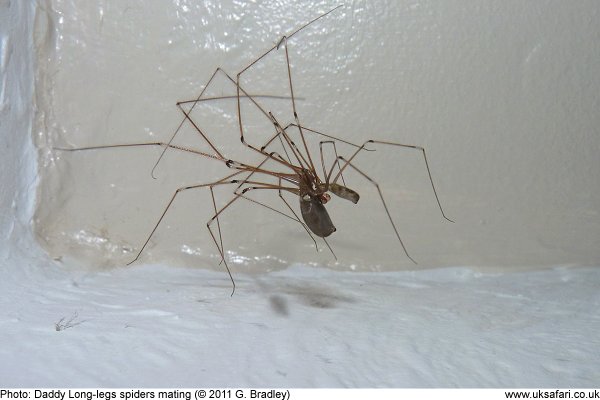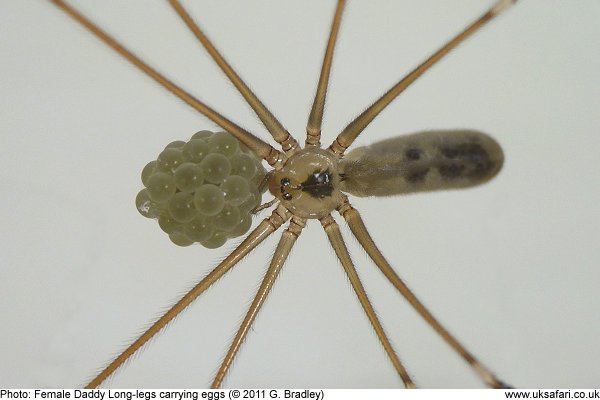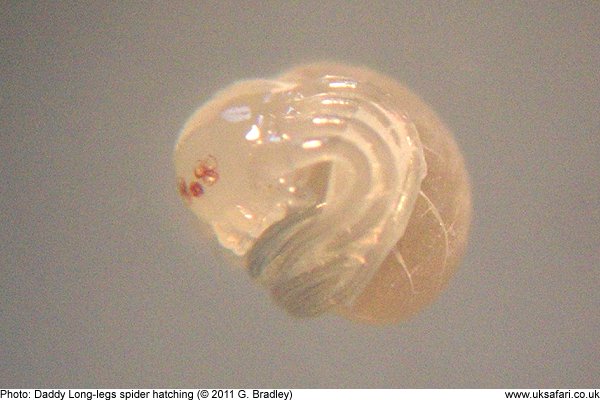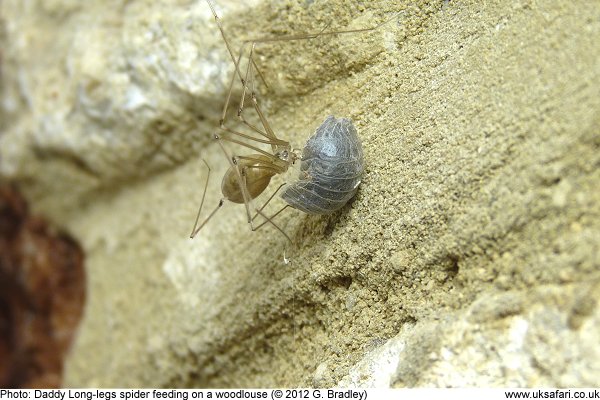 Quick Facts
Quick Facts
Scientific name: Pholcus phalangioides
Size: Head and body 10mm long
Distribution: Found throughout the U.K.
Months seen: All year round
Life span: The male spiders live for around 2 years, while the female spiders live for up to 3 years
Habitat: Found in houses - usually at ceiling height (sometimes called 'Architrave Spiders'). Also found in cellars (sometimes called 'Cellar Spiders') and caves
Food: Small invertebrates
Special features: Daddy long-legs spiders are frequently found hanging upside-down in a flimsy web of criss-cross threads in the corner of a ceiling. If you gently prod one with a finger it will shake and gyrate its body so quickly that it becomes a blur. This has given rise to another common name for them - 'Vibrating Spiders'.
The web itself looks a bit useless, but it can trap flying insects, and the spiders rush up to their victims to snare them further by throwing more silk around them.
The females carry their eggs in a loose bundle. The eggs hatch after about four weeks (depending on conditions). The mother will eat any which hatch unsuccessfully. She keeps watch over the healthy young for about another week.
The spiderlings are difficult to see without a magnifier, especially as their bodies are transparent. If you have a good hand lens you can see their internal organs working. As they grow their bodies develop a pale brown colour.
 Related Pages
Related Pages

 Popular Pages
Popular Pages
Amphibians, Bats, Badgers, Beetles, Birds, Birds of Prey, Bumble Bees, Butterflies, Caterpillars, Creepy-Crawlies, Deadly Spiders, Dolphins, Dragonflies, E-Postcards, False Widow Spiders, Free Newsletter, Frogs, Fungi, Garden Spiders, Glow-Worms, Grey Squirrels, Hedgehogs, House Spiders, Ladybirds, Mammals, Marine Mammals, Moths, Owls, Reptiles, Spiders, Toads, Trees, Wildlife Hospitals
Copyright © 2020 G. Bradley UK Safari. All rights reserved | About Us | Links | Contributors


 Daddy Long-legs Spiders
Daddy Long-legs Spiders